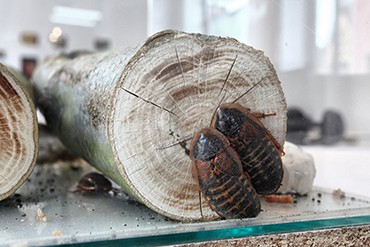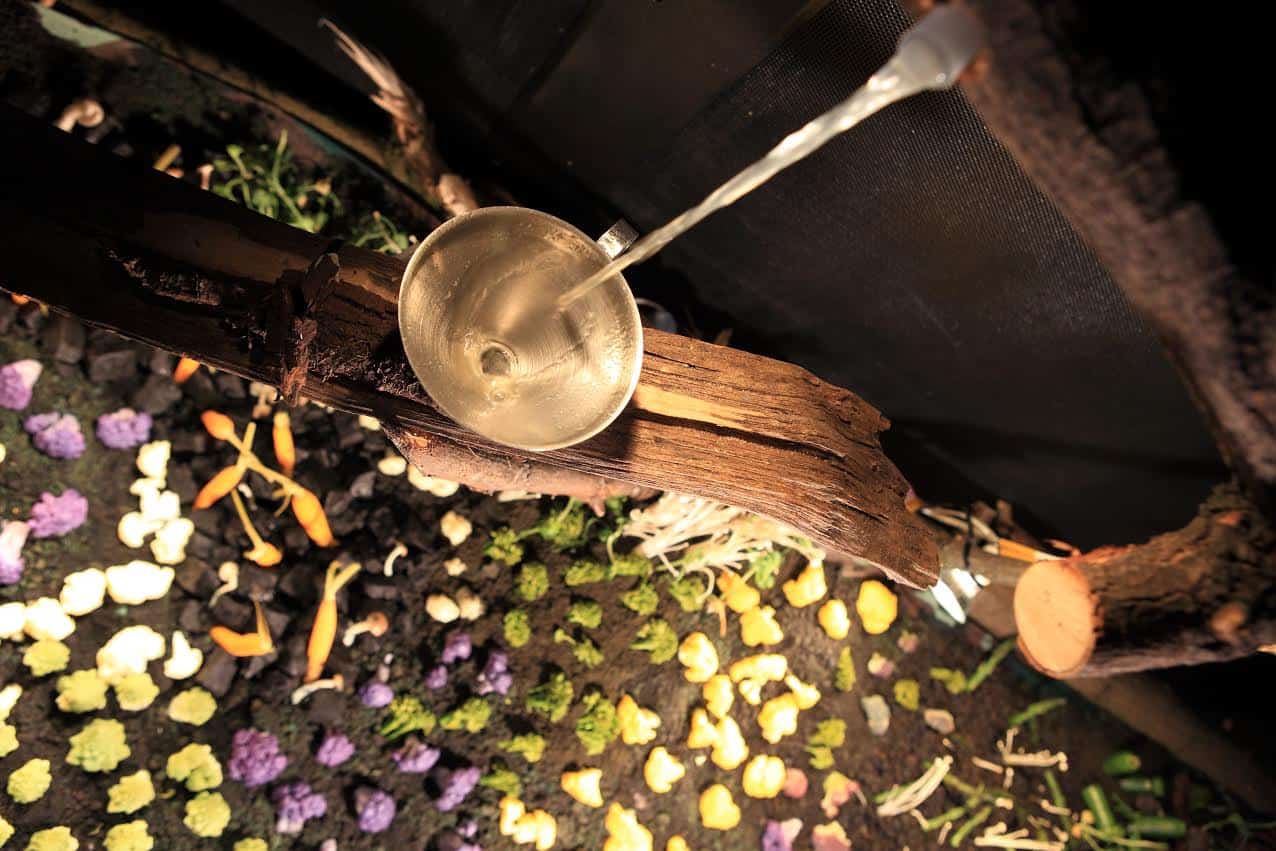It all started with a request for refreshments for a film festival held by the New Horizons – an independent cinema in Wroclaw. ‘Right here, we will build a tower. This will be the ground. Here we will put a table, and above it, we will lead a small brook of beverages. And everything will be edible!’ – Tomasz Hartman’s words had them baffled. The cinema managers expected regular catering; instead, they were presented with a sensuous culinary event. One that, in the end, turned out to be the very first project by the Wroclaw collective – Food Think Tank.

Food Think Tank, Instalacja Las, courtesy of Food Think Tank, 2015
After a meeting concerning the reception in New Horizons, Michal Lewandowski – who was supposed to help with the task – asked Tomasz exactly what just happened, and how he was planning to find the resources for the execution of his plan. The wild idea turned into a strategy. They started calling their friends and acquaintances, looking for experts in various domains. They were encouraging people to take part in the project simply in the name of sharing and exchanging knowledge in order to, with joint forces, accomplish something spectacular. And that was how ‘Four Elements’ – a project which provoked all the subsequent culinary and educational initiatives by Food Think Tank – was born.
Tomasz Hartman is a valued chef with more than twenty years of experience in gastronomy. In those twenty years he has worked in United Kingdom, Denmark and Poland. Well known for his unconventional ways to combine different flavours, he aims to work with un- or low-processed foods. He is the founder of Food Think Tank – a collective which, as of today, is created by tens of different people. Chefs, confectioners, scientists, students, artists, craftsmen, ceramists, glaziers, musicians, filmmakers, performers, bartenders, baristas, farmers, copywriters, IT specialists and technicians… Their areas of expertise vary wildly, but what they have in common is their lack of boundaries, their innovation and, above all, their love for extraordinary food. Food Think Tank’s motto, ‘The more you give, the more you get’, is the thought behind all of their undertakings.
Food Think Tank, Między Łąką a Lasem, 2014, © Food Think Tank
During our actions, we strive to engage all human senses – we stimulate them by playing carefully composed music, or diffusing fragrance oils that we distill in our own lab. We also use technical novelties, e.g. to build interactive tables with motion detectors.
‘The unorthodox culinary projects we carry out are a surprising fusion of art, contemporary design and a new outlook on flavour. During our actions, we strive to engage all human senses – we stimulate them by playing carefully composed music, or diffusing fragrance oils that we distill in our own lab. We also use technical novelties, e.g. to build interactive tables with motion detectors. Over the course of the last two years we have managed to organise five projects of considerable size entirely by ourselves, as well as numerous social initiatives and actions which have gathered many people of the gastronomic industry together. The aim was to promote a completely new approach to the subject of food,’ says Tomasz Hartman. ‘We believe our activity to be a scientific and investigative experiment, while the main purpose of our projects is education. There is no area we could be afraid to work in – our aim is to constantly obtain and share knowledge in various domains,’ he adds.
For ‘Four Elements’ – Food Think Tank’s first initiative – they used edible forms to introduce the main components of the ecosystem: water (gin and lychee liqueur cocktail with jasmine tea, orange zest, lemon juice and elderflower syrup), fire (edible bonfire made of meringue, chocolate knob and pastry), earth (arrowroot braised in miso and squid ink, with dried black olives and pumpernickel), and air (distilled natural oil with forest and citrus fragrance).
‘We believe our activity to be a scientific and investigative experiment, while the main purpose of our projects is education. There is no area we could be afraid to work in – our aim is to constantly obtain and share knowledge in various domains,’.
A month after the success of the first project, another one was conceived. The team’s hard work, research and exchange of skills were a four-month process. It resulted in the second venture – ‘Between Meadow and Forest’. As a young collective, Food Think Tank had a nearly non-existent budget paired with a substantial hoard of ideas; they had to find a way to make them real. They harvested the ingredients for the dishes in the meadows and forests surrounding Wroclaw, and received some from local farmers as well.
The finale in April 2013, was a 30-guest dinner hosted on the patio of the University of Environmental and Life Sciences in Wroclaw. The people who took part in this project were chefs (Tomasz Hartman, Michal Werda, Michal Czekajlo), scientists and students of the Faculty of Food Science and the Academy of Art and Design, farmers, carpenters, bartenders, baristas, but also sound engineers and filmmakers, a photographer (Jedrzej Stelmaszyk, co-founder of Food Think Tank) and an interior designer (Joanna Nowara, who has worked on all the projects). The dishes were meant to reflect the gifts of nature. It was a nine-course feast, with specialties such as frog meat stones or marsh plants (lichen, samphire, wild chives, watercress, dandelion buds), edible beech tree bark, spicy herbed snail curd stuffed shells and high-protein earthworm candy bar with toffee.
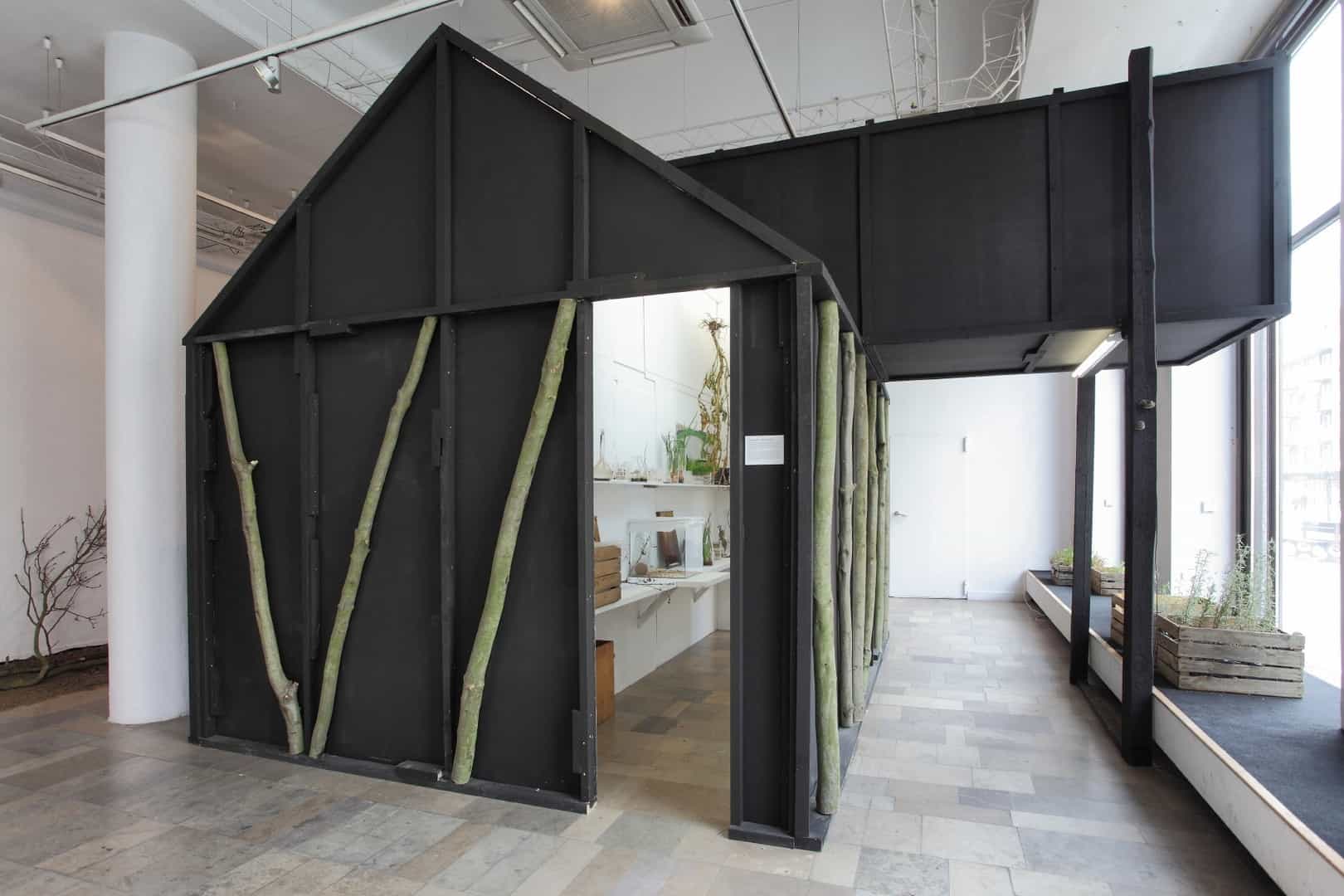
Food Think Tank, Installation Ziemia Woda,Dizajn BWA Gallery, Wrocław, 2015, image © Karolina Zajączkowska & Jędrzej Stelmaszek
Incessantly inspired by flora and fauna, the Food Think Tank team decided to move their kitchen outdoors. After another four months of preparations, they threw a dinner party which concluded their third project, ‘Orchard and Fire’. The aim was to host a supper mostly using ingredients from an orchard, and cooking them directly over a fire. For the purpose of the project, they built a kitchen in an orchard in Lukaszowice. They cooked on the ground; dried, roasted, smoked and grilled the food. These techniques allowed them to create some truly amazing dishes which were served during the open air supper hosted in September. During the groundwork, Food Think Tank launched a collaboration with Karina Marusinska, who is a tutor in the Studio of Functional Ceramics Design of the Academy of Art and Design in Wroclaw, and an interdisciplinary artist – connecting art, design and education with social activism. Since then, Karina and her students have been creating unique ceramics for their projects. It was also around the time when valued chef Luiza Trisno joined the team as well. Luiza, a propagator of unorthodox cuisine, became famous for her appreciation of unknown components, her inclination towards prolonged cooking times while valuing a close relation with nature. The six courses of the dinner included, among other things, roasted duck stuffed with liver and fruit, partridge broth with walnut milk, grape flan, and apple cider.
The preparations for the next educational initiative lasted six months. During this time the whole team worked hard on gathering the information and supplies necessary for the fourth project – ‘Earth and Water’. The final supper, hosted in April 2015, was preceded by an exhibition in the Dizajn Gallery of BWA Wroclaw (Gallery of Contemporary Art). It presented the methodology used by Food Think Tank. The restaurant was situated in the middle of suburban fields near Wroclaw, in Ewelina Zygadlo’s farm called Milejowe Pole. Food Think Tank built a half-underground dining and cooking area which was open to public for only four hours – just enough to host the dinner concluding ‘Earth and Water’. The project was performed by several dozens of people collaborating together. The dishes were mostly based on fish, root vegetables, amphibians, reptiles, and insects. Table tops made of glass were a reminiscence of the slightly wavy surface of water. Each course was served on a ceramic dish manufactured especially for its sake. The visual identification of the project was handled by Ewelina Turkot – a graphic designer, monotype, sketch and collage specialist who examines the subject of female art and is an active contributor to the Food Think Tank collective. The eight courses of the supper included double mealworm tacos, wrzawska beans cheese, cockroaches, pickled tomatoes with evening primrose and clay roasted trench vegetables with herbed butter, as well as earth-, pond- and potato-flavoured water.
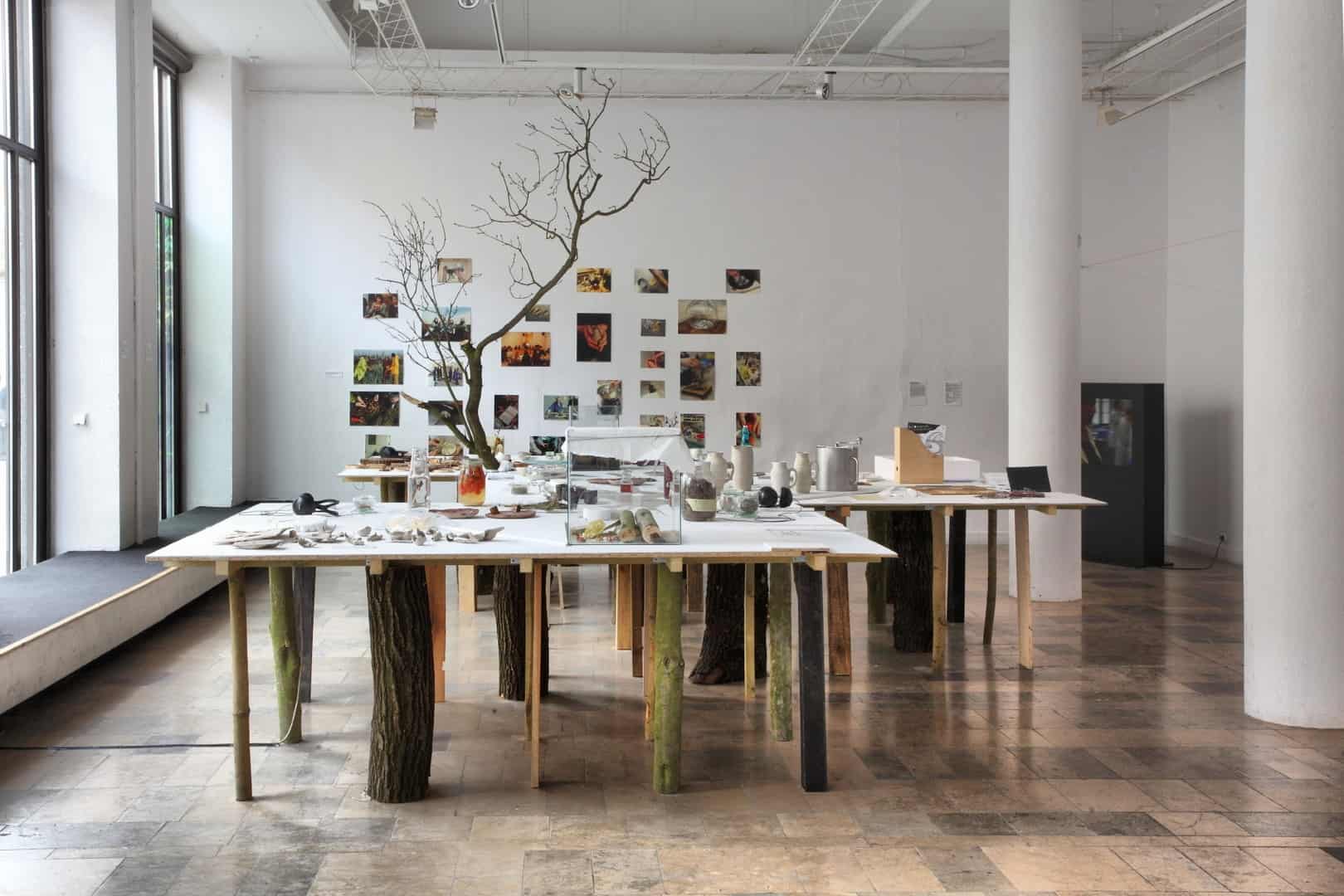
Food Think Tank, Installation Ziemia Woda,Dizajn BWA Gallery, Wrocław, 2015, image © Karolina Zajączkowska & Jędrzej Stelmaszek
In their most recent project, Food Think Tank decided to focus on the essence of acquiring food; on its primordial nature and on centuries-old cooking techniques. Making use of their previously obtained skills and experience, the group hosted an experimental dinner which was also their research work – a study of a forest. The main goal was to understand its spirit and structure in the context of nature. They broke it down into prime factors and reconstructed it again to create a vision of a forest as seen by the people of the 21st century.
The finale of ‘Forest – the Installation’ was in mid-October 2015. It took five months of work (in cooperation with woodsmen, scientists, craftsmen and numerous other experts) to build a forest in the middle of the city. The chefs and the authors of beverages created a harmonious menu, which consisted almost entirely of ingredients straight from the forest. Thanks to the sound effects, the scents and the visualisations; the interiors of the group’s atelier in Wroclaw was transformed into an interactive wild glade. Taste was the only sense waiting to be satisfied.
image © Food Think Tank
Thanks to the sound effects, the scents and the visualisations, the interiors of the group’s atelier in Wroclaw, was transformed into an interactive wild glade. Taste was the only sense waiting to be satisfied.
This time the guests were forced to actively participate in the project. The hosts replaced a traditional table with individual wooden racks. People had to interact with the food – as instead of cutlery, they were handed gloves – and eat directly with their hands. The technology of the installation’s multimedia allowed to synchronize the rotating courses with changing fragrances, sound effects and lighting around the tables. Roots, mushrooms, shrub fruits, fowl, game, insects and leaves formed the basis for the menu. There were seven courses, and among them: marinated superworms with resin candy floss, „amanita” cake on shiitake and gypsy mushroom flour with creme caramel made of morchella mushrooms and nuts with a mastic frosting, and blood pancakes with hazel preserve and cloudberry.
Food Think Tank, Między Łąką a Lasem, 2014
The Food Think Tank enrich old techniques with their innovations meant to trigger all human senses. They love and enjoy learning and sharing their knowledge. Through this they have created an entirely new way of interpreting food – from the Root.
The premier of Gastro Zin – a straightforward monthly set of nonchalant epigrams and poems by Food Think Tank members – took place in January 2016. The group keeps drawing more and more attention, ideas, interesting collaborative propositions, and – above all – more and more people with various areas of expertise willing to work with them. Recently, Szymon Hanczar – an architect and interior designer working with the Academy of Art and Desing in Wroclaw – also joined the team.
Considering their essence to be beyond any existing forms of gastronomy, the Food Think Tank collective call their innovative culinary movement Korzeń, which translates to ‘Root’. It is a return to a style of cooking that has always been present in Polish kitchens but is often forgotten in the rush of contemporary times. The Food Think Tank enrich old techniques with their innovations meant to trigger all human senses. They love and enjoy learning and sharing their knowledge. Through this they have created an entirely new way of interpreting food – from the Root.
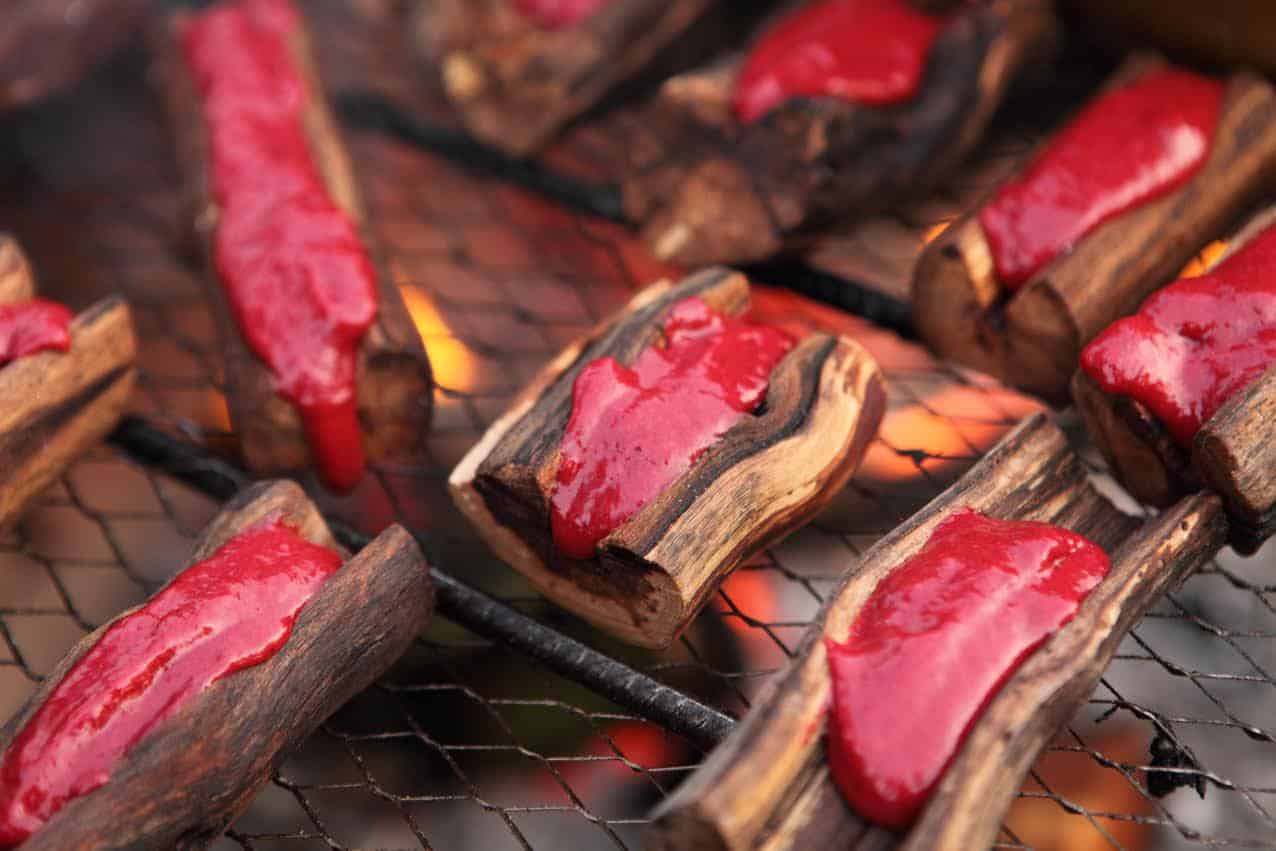
image © Food Think Tank
words: Ewa Olczyk
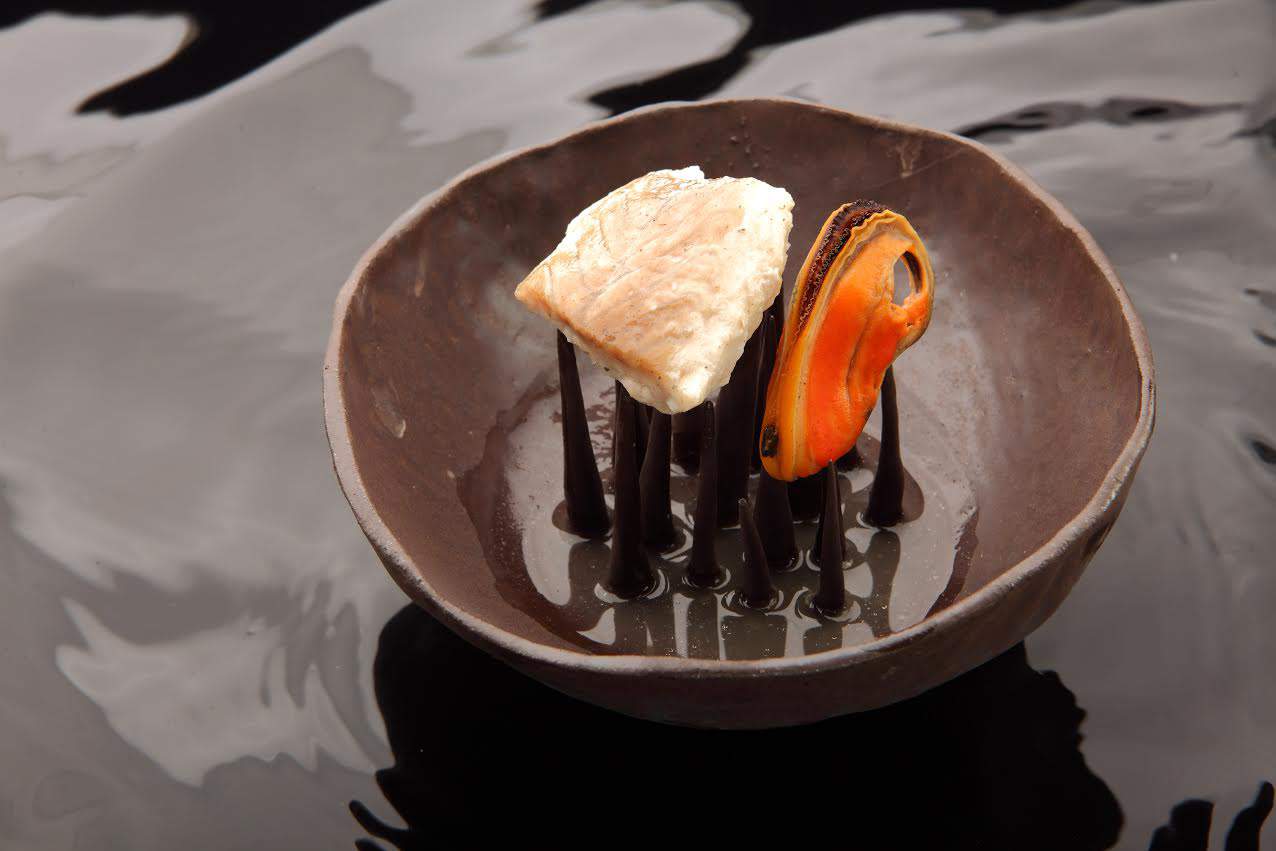
image © Food Think Tank
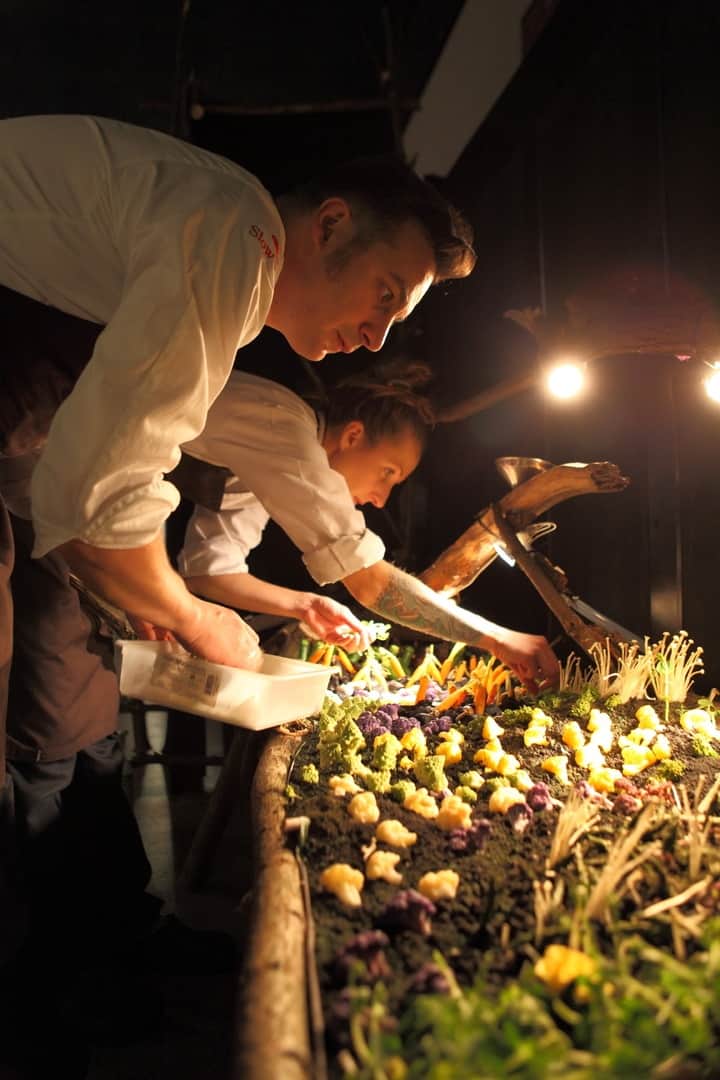
image © Food Think Tank

Food Think Tank, Installation Ziemia Woda,Dizajn BWA Gallery, Wrocław, 2015, image © Karolina Zajączkowska & Jędrzej Stelmaszek
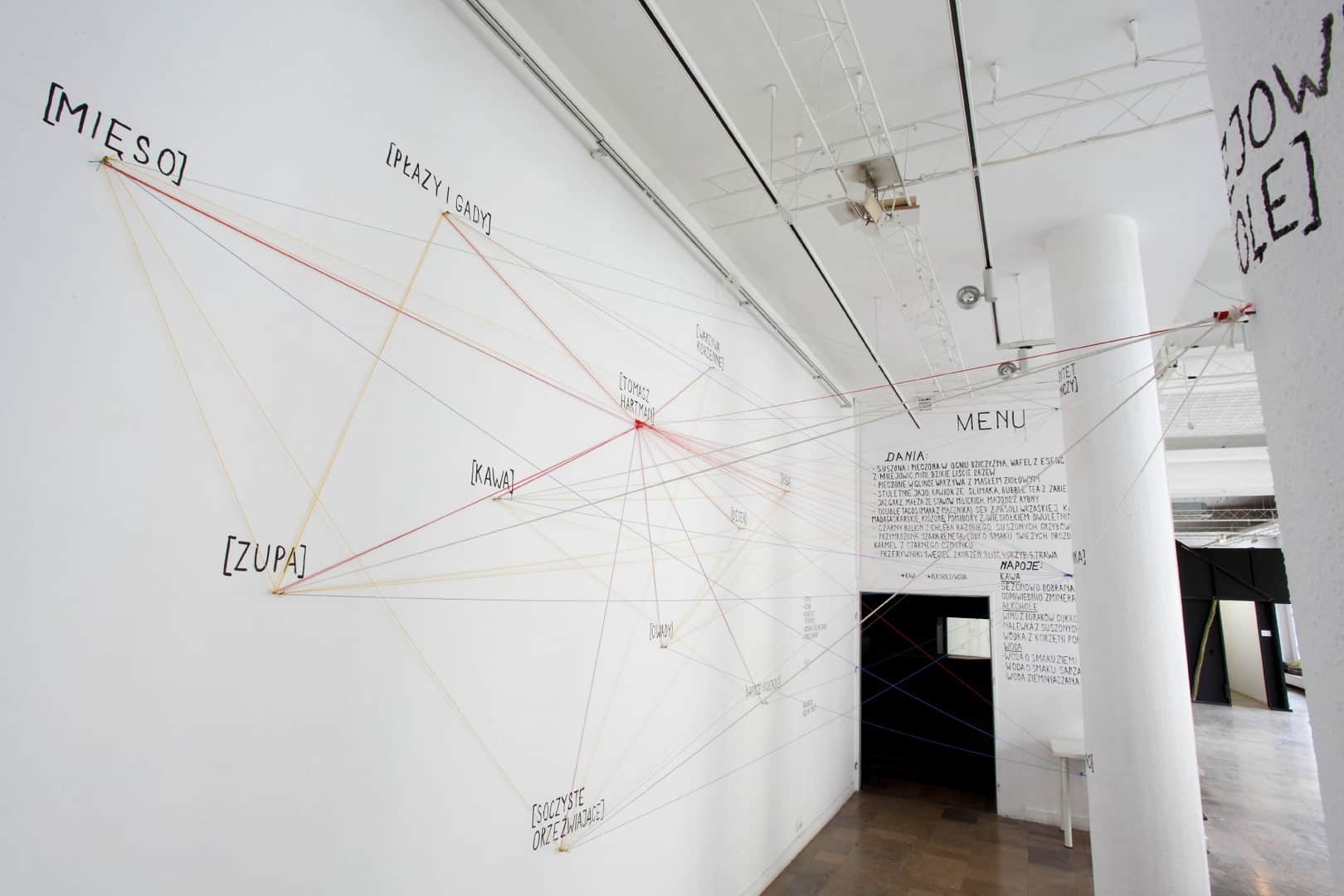
Food Think Tank, Installation Ziemia Woda,Dizajn BWA Gallery, Wrocław, 2015, image © Karolina Zajączkowska & Jędrzej Stelmaszek

Sad i Ogień, courtesy of Food Think Tank, 2014








